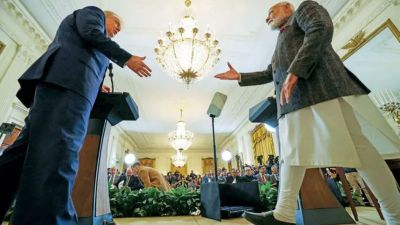Oral cancer is ravaging India’s workforce, costing $5.6 billion in economic loss, says Tata Memorial study: Here’s why India needs early screening, diagnosis
A first-of-its-kind study maps how we have lost a productive workforce, with most patients succumbing to the disease in their early 40s
 Considering 90 per cent of oral cancers are preventable, the findings are stark as they highlight problems of late diagnosis, intervention, access to and cost of healthcare. (Source: Getty Images/Thinkstock)
Considering 90 per cent of oral cancers are preventable, the findings are stark as they highlight problems of late diagnosis, intervention, access to and cost of healthcare. (Source: Getty Images/Thinkstock)A new study led by Tata Memorial Hospital has estimated that premature oral cancer deaths have cost India productivity losses to the tune of $5.6 billion or 0.18 per cent of its GDP in 2022.
One of the key findings of the study, according to its lead author Dr Arjun Singh, Assistant Professor, Tata Memorial Hospital, is that 91 per cent of the deaths or terminal stages were among patients with a median age of 41.5 years. Given that the retirement age in India is around 62 years, the study — which tracked 100 patients over three years — showed that those who succumbed to the disease cumulatively lost 671 productive or working years (29.8% to early stages and 70.2% to advanced stages). The monetary value of the losses for men exceeded Rs 57 lakh and that for women Rs 71 lakh.
“If they had survived, they could have contributed more to the country’s GDP,” said Dr Singh, given the population mortality rates in India.
As Dr RA Badwe, senior author and former director, Tata Memorial Centre, said, “Very few studies have focussed on productivity losses of cancer in low resource settings and in particular India. This study will help policy-makers plan effective resource allocation for oral cancer treatments.”
Considering 90 per cent of oral cancers are preventable, the findings are stark as they highlight problems of late diagnosis, intervention, access to and cost of healthcare. Both early (70 per cent) and advanced (86 per cent) stage cancers affected the middle class, with 53 per cent requiring some form of insurance schemes or financial support in order to complete treatment, say researchers.
Oral cancer is caused due to tobacco consumption including smokeless tobacco, betel-quid chewing, excessive alcohol consumption, unhygienic oral condition, and sustained viral infections that include papillomavirus.
The study analysed the impact of premature deaths on the GDP. “Productivity lost due to premature mortality among females and males was Rs 57,22,803 and Rs 71,83,917, respectively per death. The income loss to the GDP amounted to Rs 31,29,092 per early-stage and Rs 71,72,566 per advanced-stage cancer,” said Dr Singh.
HOW WERE THE COSTS ARRIVED AT
Dr Singh and his team used the human capital approach, which views education, training, and health as investment in human capital. According to this approach, these investments increase a person’s productivity and earning potential over time. “The calculation of productivity loss, reflecting the income contribution from premature mortality, employed the ‘human capital approach.’ This study uniquely profiles patients from diverse backgrounds, including various employment status, socio-economic standing and education levels over an extended duration,” said Dr Singh.
In most economic studies, assumptions are considered for market wages and other indicators during calculations. “This is one of the few studies where individual patient data (including market and non-market contribution, socio-economic status, education level, etc.) was gathered prospectively and over a long time period,” said Dr Singh.
“However, these figures likely under-estimate the true impact due to disparities in treatment access across the country. While population data is sourced from the internationally validated registry GLOBOCAN, it’s important to note that coverage in low- and middle-income countries may represent less than 10 per cent of the actual population, implying a potentially greater burden than indicated,” Dr Singh said.
WHY IS THIS STUDY SIGNIFICANT?
In India, oral cavity cancer has emerged as the most prevalent cancer among men with the country contributing to almost a third of the global incidence and mortality. Doctors say that this study re-emphasises the need for early screening for the younger age group.
Despite significant strides in diagnosing and treating oral cancers, escalating treatment expenses have imposed a financial burden on both healthcare providers and patients. Additionally, these cancers are increasingly afflicting younger age groups in contrast to trends observed in the Western world, posing a considerable strain on economic productivity.
Dr Sudeep Gupta, Director of the Tata Memorial Centre, emphasised, “According to the latest GLOBOCAN statistics, 55 per cent of diagnosed oral cancers result in fatalities. The pervasive lack of awareness, coupled with fear and misconceptions surrounding oral cancer, result in a substantial portion of cases being detected at an advanced stage, thereby contributing to elevated mortality rates. Even individuals receiving prompt treatment often undergo intricate surgeries and experience a diminished quality of life.”
Photos



- 01
- 02
- 03
- 04
- 05



























